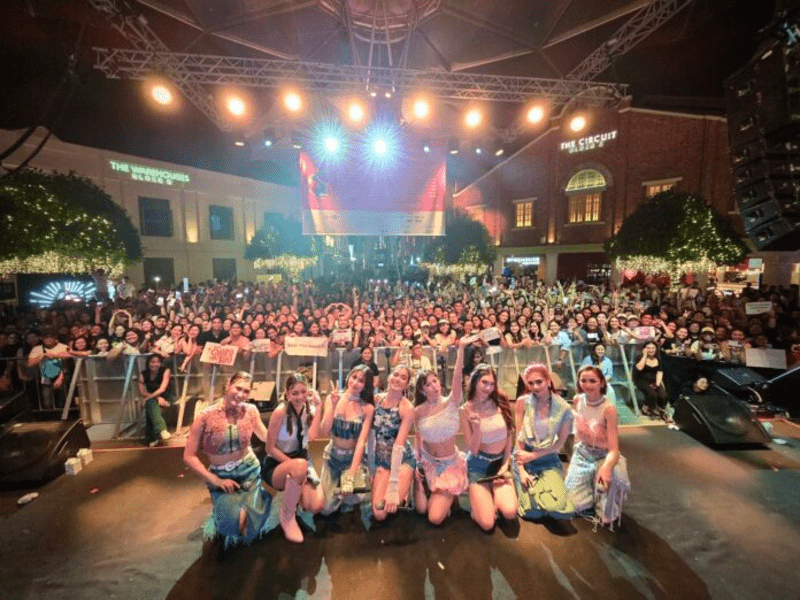
The Resurgence of P-pop: Transforming the Filipino Entertainment Through P-pop Groups
The Philippine entertainment landscape has been transformed by the emergence of P-pop, a genre that infuses the vibrant beats of pop music with the rich tapestry of Filipino culture.
This dynamic blend has propelled Filipino music onto the international stage, showcasing the talents of P-pop artists who are not only redefining the local music scene but also influencing the global music industry.
From their inception to their impact on society, let’s delve into the intricacies the local music industry and how P-pop is shaping the future of Filipino entertainment.
The Rise of P-pop Groups
P-pop, or Pinoy pop, is a testament to the evolution of Filipino music, drawing inspiration from various sources including the traditional folk music that echoes the nation’s soul and the energetic beats of hip hop that resonate with the youth.
These genre have taken cues from Original Pinoy Music (OPM), which has long been the heartbeat of the Philippine culture, and infused it with modern pop sensibilities to create a sound that is both familiar and fresh.
P-pop’s journey began long before its current fame. Tracing back to the 80s and 90s, and even the early 2000s, icons like Jolina Magdangal and groups such as Sex Bomb and Viva Hot Babes paved the way.
Today, P-pop is not only a continuation of Original Pinoy Music (OPM) but also its evolution. It’s a big sound chart topper that continues to redefine the boundaries of Filipino music.
P-pop has captivated many Filipino fans and is now stepping onto the global stage, earning international recognition. From the underground rappers to the polished performances of pop groups, P-pop artists are blending Philippine languages and regional dialects with different sounds from around the world. This fusion creates music that resonates with Philippine society while also appealing to international fans.
P-pop vs K-pop: Unique Identity and Blend of Cultures
While P-pop shares similarities with its Korean counterpart, it also boasts a unique identity rooted in Filipino culture.
It’s a genre that celebrates the rich tapestry of Filipino culture, carving out its own niche in the global music scene. While it draws inspiration from the polished aesthetics of K-pop groups and the catchy hooks of J-pop, P-pop stands out by weaving in the diverse regional languages and different sounds that represent the many facets of Philippine society.
The creative process behind P-pop is a testament to the genre’s commitment to authenticity and individuality. Unlike the often uniform approach of K-pop idols, P-pop artists are encouraged to infuse their music videos with personal flair, reflecting the vibrant and varied experiences of many Filipinos.
This has led to a surge in international recognition for P-pop groups, who are not only dominating the local music scene but also capturing the hearts of fans across borders.
Korean artists and record labels have certainly paved the way for Asian acts to achieve global stardom, igniting the Korean Wave that has swept over South Korea and beyond.
However, P-pop is riding its own wave, propelled by a blend of western music influences and homegrown talent. The result is a series of music videos and tracks that resonate with a universal audience while staying true to the Filipino language and culture.
Training and Development: Behind the Scenes of P-pop Groups
Behind every successful P-pop group lies a rigorous training and development process. From vocal lessons and dance rehearsals to media training and personality development, aspiring idols undergo extensive preparation before debuting. This behind-the-scenes glimpse into the world of P-pop sheds light on the dedication and hard work required to succeed in the industry.
SB19
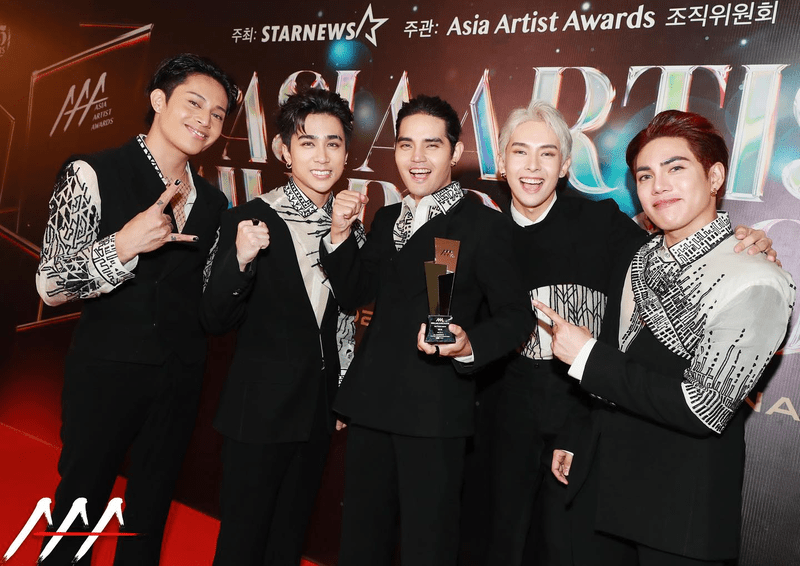
The trailblazing boy band, underwent nearly three years of intense training under ShowBT Philippines, a subsidiary of ShowBT Group in Korea. Their training regimen included a grueling nine-hour daily schedule of vocal and dance practice, with only one day off per week. This discipline is evident in their polished performances and their ability to captivate audiences with both their music and choreography.
Bini
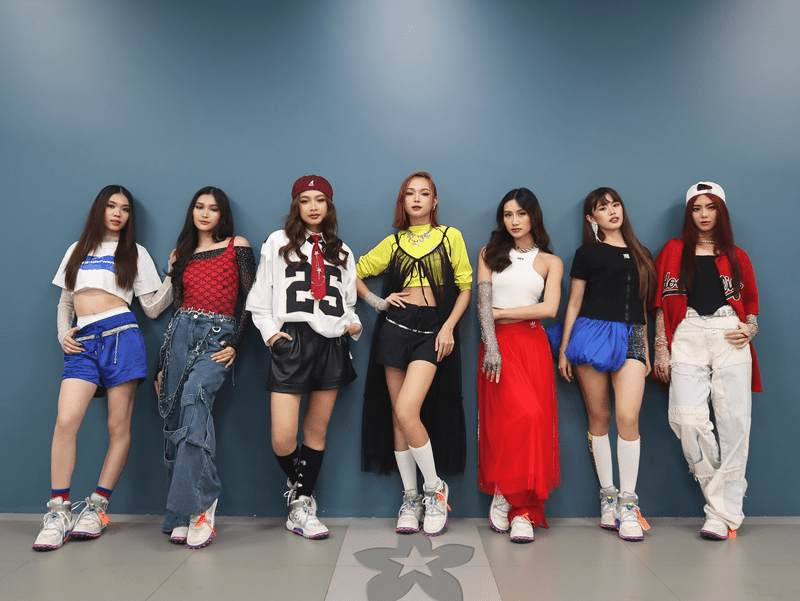
The eight-member girl group from Star Magic, was shaped by almost two years of rigorous training under Star Hunt Academy and South Korean training company MU Doctor. Their preparation included not just honing their performance skills but also education and personality development to mold them into strong, independent young women, reflecting the modern Filipina.
Alamat
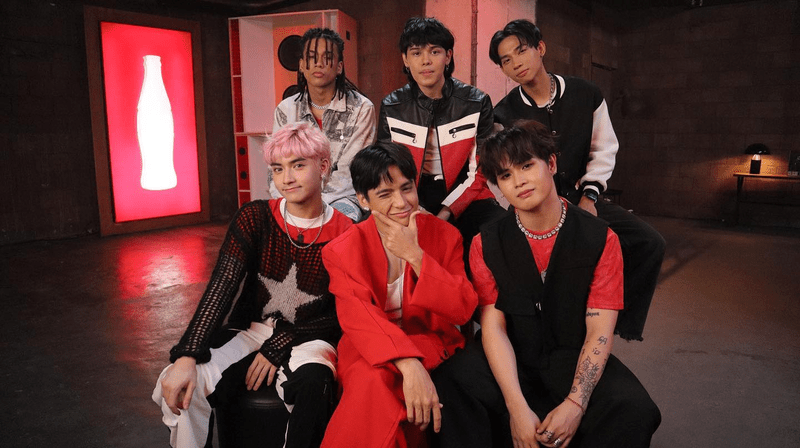
known for their multilingual repertoire, was formed after a nationwide talent search and shortlisted hopefuls underwent training to become part of the group. Their training, although less than a year, Alamat’s case was intensive and covered singing, dancing, physical fitness, and personality development, enabling them to make a strong debut.
G22
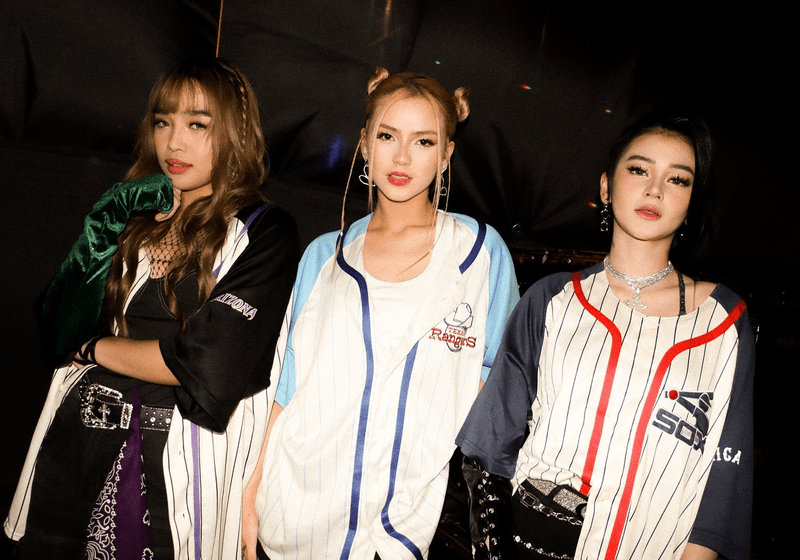
Tagged as the “Female Alphas of Philippine Pop,” is a product of Cornerstone Entertainment’s training system. The details of their training process are not as extensively documented, but their polished performances and quick rise in the P-pop scene suggest a comprehensive and well-structured preparation period that equipped them with the skills needed for their dynamic performances.
These groups represent the pinnacle of P-pop, each bringing their unique style and energy to the industry, and their success is a testament to the effectiveness of their training and the universal appeal of their music.
The Driving Force of P-Pop
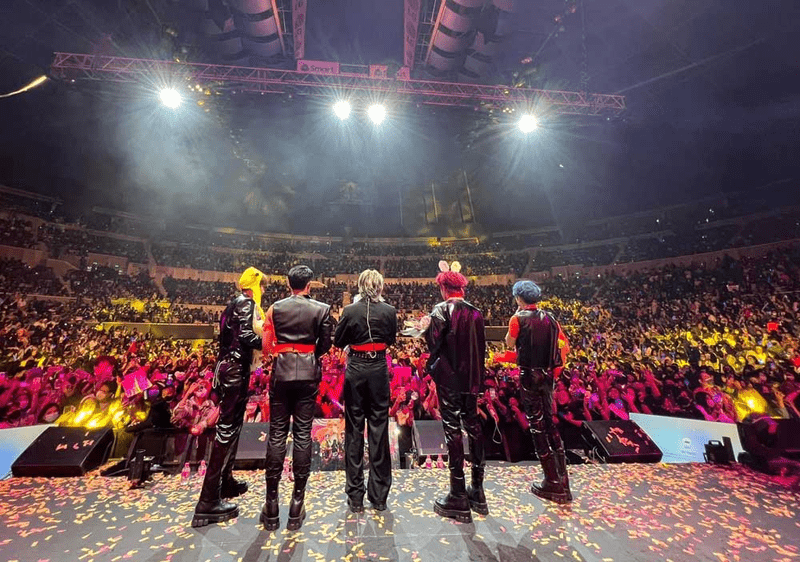
At the core of P-pop’s meteoric rise lies its fervent fanbase. Hailing from Quezon City to other corners of the Philippines and beyond, these fans are the lifeblood of the genre. Their ardent support extends beyond borders, as they rally behind their favorite artists and groups, spreading their music and message to a wider audience across the world.
This fervent support is not just about music; it’s a celebration of Filipino culture and talent, inspiring a renewed sense of Pinoy Pride.
The unique characteristics of P-pop, with its infectious dance routines and heartfelt lyrics in the Filipino language, have captivated a wider audience, spreading the vibrant pop culture of Filipinos to other countries.
Streaming platforms have played a significant role in this cultural exchange, allowing P-pop to resonate with different perspectives around the world.
Today, P-pop plays a significant role in promoting Filipino culture on the world stage. As P-pop artists showcase the country’s rich heritage through their music and performances, they serve as cultural ambassadors, introducing Filipino traditions, language, and values to audiences around the world.
In doing so, they foster greater understanding and appreciation for Filipino culture while celebrating the talent and creativity of Filipino artists.
Groups like SB19 and Bini have become the ambassadors of this dynamic genre, garnering international recognition and redefining Filipino music on the global stage. Their songs, rich in storytelling and rhythm, showcase the diverse culture of the country and the significant role of P-pop in the music world.
Through their artistry, these artists have proven that Filipino talent can shine globally, breaking barriers and uniting listeners through the universal language of music.
Moreover, the impact of P-pop extends beyond entertainment. It plays a significant role in promoting the tourism industry through its cultural and popularity factors, inviting the world to explore the rich heritage and warm hospitality of the Philippines.
As P-pop continues to grow, it not only entertains but also educates, becoming a beacon of Filipino pride and a testament to the country’s place in the global community.
How P-pop is changing Filipino Entertainment

P-pop is not just a musical genre; it’s a cultural force reshaping the Filipino entertainment landscape in profound ways. Its influence transcends music, infiltrating television, film, fashion, and advertising, imprinting its vibrant essence onto every facet of mainstream media.
This cultural phenomenon has disrupted traditional norms and stereotypes, heralding a new era of diversity and representation within the industry.
The dynamic essence of P-pop serves as a catalyst for change, inspiring storytellers to infuse its themes and aesthetics into their narratives.
This infusion breathes new life into Filipino storytelling, resonating with audiences far and wide, while authentically reflecting the country’s rich cultural mosaic.
In the realm of fashion, P-pop artists have ascended to the status of trendsetters, weaving traditional Filipino elements with contemporary pop culture to create a fashion renaissance that pays homage to heritage while embracing modernity.
Beyond aesthetics, P-pop’s integration into advertising has revolutionized how brands connect with audiences. By tapping into the allure of P-pop groups, companies forge authentic connections with the youth demographic, crafting marketing campaigns that mirror the values and aspirations of young Filipinos.
Perhaps most notably, P-pop’s commitment to diversity shines through its embrace of various regional dialects and languages, championing Filipino ethnic and linguistic diversity on a national stage. This inclusivity not only enriches the entertainment industry but also empowers communities by amplifying their voices and stories.
As P-pop continues to evolve, it is clear that its impact on Filipino entertainment is significant and far-reaching. It has become a powerful force in shaping the country’s pop culture and will undoubtedly continue to influence and inspire for years to come.
The Road Ahead for P-pop Music
The P-pop industry, despite its burgeoning success and international recognition, faces a myriad of challenges and controversies that test its resilience and adaptability. As it carves out a distinct space in the global music scene, P-pop must navigate intense industry competition, management issues, cultural appropriation debates, and fan conflicts, all of which significantly influence its trajectory and evolution.
Intense Industry Competition and Management Challenges
P-pop groups operate in a highly competitive industry, where the pressure to stand out and succeed is immense. This intense competition can be both a driving force and a significant hurdle. Emerging groups often find themselves in a race to differentiate their music, image, and brand in a saturated market. The pressure to produce hits and maintain a loyal fan base can lead to burnout and creative exhaustion among artists.
Management issues further complicate the landscape. The rigorous training regimens and high expectations placed on P-pop idols can sometimes lead to conflicts between artists and their management teams. Issues such as unfair contracts, overworking, and lack of creative freedom are not uncommon and have sparked debates within the industry. Addressing these concerns requires a balanced approach that prioritizes the well-being of artists while maintaining the industry’s competitive edge.
Cultural Appropriation and Integration of Diverse Influences
Cultural appropriation remains a contentious issue within the P-pop industry. As P-pop integrates diverse musical and cultural influences, it must do so with sensitivity and respect for cultural boundaries. The blending of Filipino culture with elements from K-pop, J-pop, and Western music has enriched the genre, but it also necessitates a thoughtful approach to ensure that cultural exchange does not turn into cultural exploitation.
Artists and producers need to engage in continuous dialogue about the origins and significance of the influences they incorporate. This approach not only fosters a deeper appreciation of different cultures but also helps in creating a more inclusive and respectful music industry.
Fan Conflicts and Artist Boundaries
The passionate support of fans is a cornerstone of the P-pop industry, but it can also lead to conflicts. Fan entitlement and toxicity have emerged as significant concerns, with some fans crossing boundaries and exerting undue pressure on artists. These conflicts underscore the need for a balance between fan enthusiasm and respect for the personal and professional boundaries of artists.
Artists and management teams must work together to cultivate a healthy fan culture that promotes respect and understanding. Initiatives such as fan education campaigns and clear communication about boundaries can help mitigate conflicts and create a more supportive environment for both artists and fans.
Unity and Resilience in the P-pop Community
Despite these challenges, the spirit of unity and resilience within the P-pop community continues to propel the genre forward. The collective determination to innovate and adapt in an ever-evolving global music landscape is a testament to the strength of P-pop. Artists, fans, and industry professionals are united in their efforts to elevate Filipino talent and culture on the world stage.
This unity is evident in the collaborative efforts between artists and fans. Social media platforms and fan events provide spaces for meaningful interactions, where fans can express their support and artists can show their appreciation. These interactions foster a sense of community and belonging, reinforcing the bonds that sustain the P-pop industry.
Embracing the Future: Innovation and Global Influence
As P-pop artists and fans forge ahead, they carry with them the lessons of the past and the promise of a future where Filipino talent continues to shine globally. The industry is poised for further growth, driven by a commitment to innovation and a deep-rooted connection to Filipino culture.
Technological advancements, such as virtual concerts and digital fan engagements, offer new opportunities for reaching international audiences. These innovations not only expand the reach of P-pop but also enhance the fan experience, making it more interactive and immersive.
The influence of P-pop extends beyond music, impacting various aspects of Filipino culture and society. Fashion trends, social movements, and cultural dialogues are all shaped by the dynamic presence of P-pop in the public sphere. This cultural impact underscores the significance of P-pop as more than just a musical genre; it is a powerful force for cultural expression and societal change.
The road ahead for P-pop is filled with both challenges and opportunities. By addressing industry competition, management issues, cultural appropriation, and fan conflicts with sensitivity and resilience, P-pop can continue to thrive and evolve. The genre’s ability to innovate, adapt, and unify will determine its future success. As P-pop continues to captivate audiences worldwide, it will undoubtedly solidify its place as a transformative force in the global music landscape, showcasing the richness and diversity of Filipino talent.
The Future of P-pop and Filipino Music Entertainment
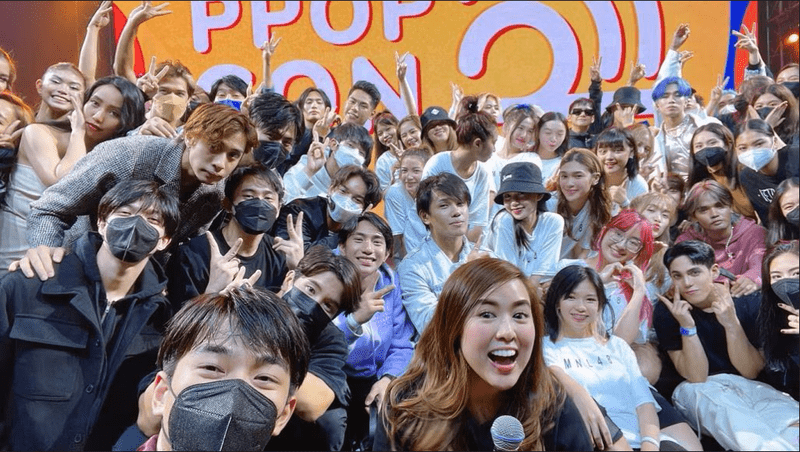
As P-pop continues to evolve and grow, the future of Filipino entertainment looks brighter than ever. With a new generation of talented idols waiting in the wings, the possibilities are endless.
From pushing boundaries and exploring new genres to promoting social change and cultural exchange, P-pop is poised to shape the future of Filipino entertainment for years to come.
The influence of P-pop extends beyond music, actively weaving elements of Filipino culture into its fabric, captivating local audiences, and educating a global community.
P-pop groups have been reaping phenomenal successes, both domestically and internationally, marking a significant shift in the landscape of Original Pinoy Music (OPM).
Groups like SB19, Bini, Alamat, Kaia, and G22 have gained recognition for their unique contributions to the genre, from incorporating multiple Filipino languages in their songs to co-writing tracks that revolve around themes of hope, youth empowerment, and self-love.
To truly appreciate the essence of Filipino pop music, it’s imperative to delve into its historical roots while also examining its contemporary trajectory, especially amidst the increasing accessibility of the pop music scene.
The advent of digital streaming platforms and music production software has democratized the music industry, granting artists the autonomy to release their music independently, free from the constraints of traditional record labels or sales pressures.
With the barriers to music production at an all-time low, artists now wield unprecedented power to craft and disseminate their music on their own terms.
Present-day acts like Bini, Alamat, and SB19 are reaping the rewards sown by the pioneering figures of Filipino music, carrying forward a legacy of innovation and cultural expression.
As the spectrum of popular music expands, there arises a necessity to broaden our comprehension of Original Pilipino Music (OPM), especially in a nation as culturally diverse as the Philippines.
The predominant use of Tagalog in OPM has led musicians from various Filipino backgrounds to feel marginalized by the term.
The evolution of the Filipino pop music scene has been characterized by a continual process of redefinition: from initially mirroring Western influences, to reclaiming local language and culture through music, and now confronting the challenge of cultivating a more inclusive Filipino musical landscape.
The trajectory of Filipino pop music is not predetermined; in today’s dynamic milieu, the ability to shape its future lies collectively in the hands of the multitude, not just a select few.
With such a momentous rise, P-pop is not just entertainment; it represents a cultural movement. It highlights the talent and creativity inherent in the Filipino spirit, inspiring pride and unity at home while resonating with audiences worldwide.

Celebrate Life’s Milestones in Camella!
Make unforgettable memories in a Camella home.
Our communities are designed to elevate your living experience.


